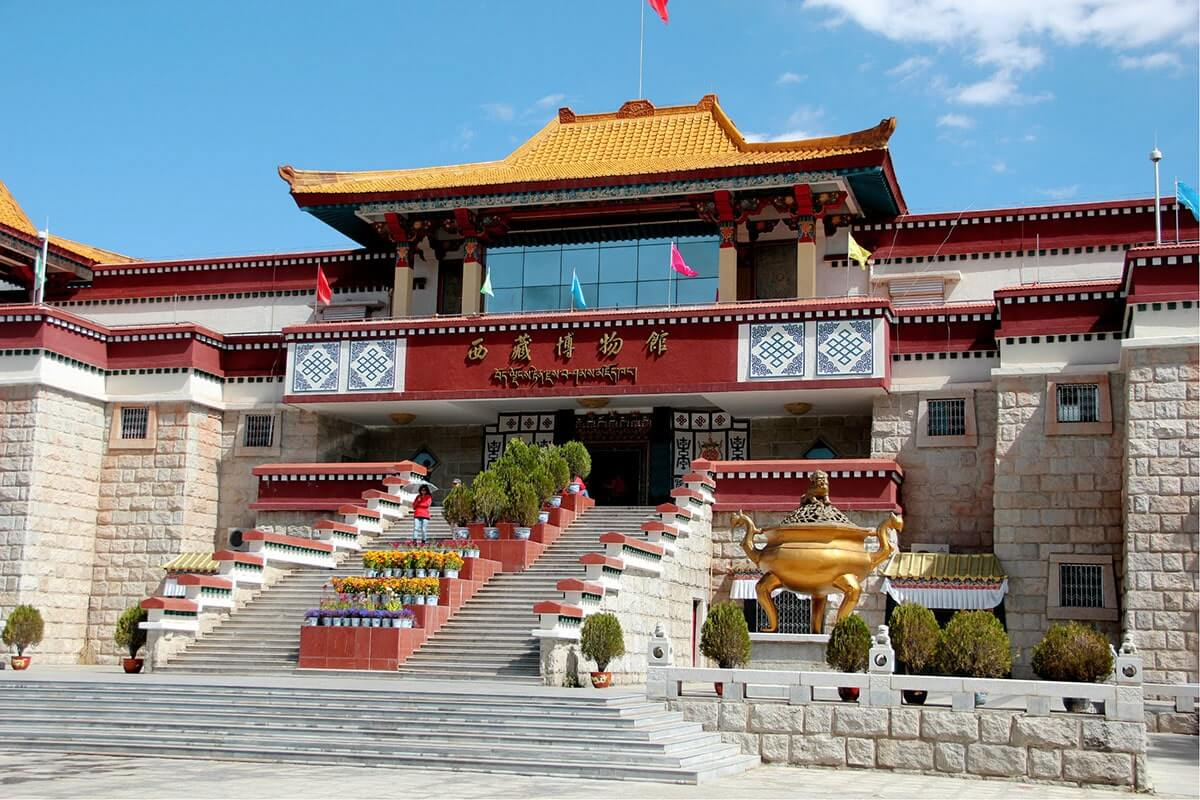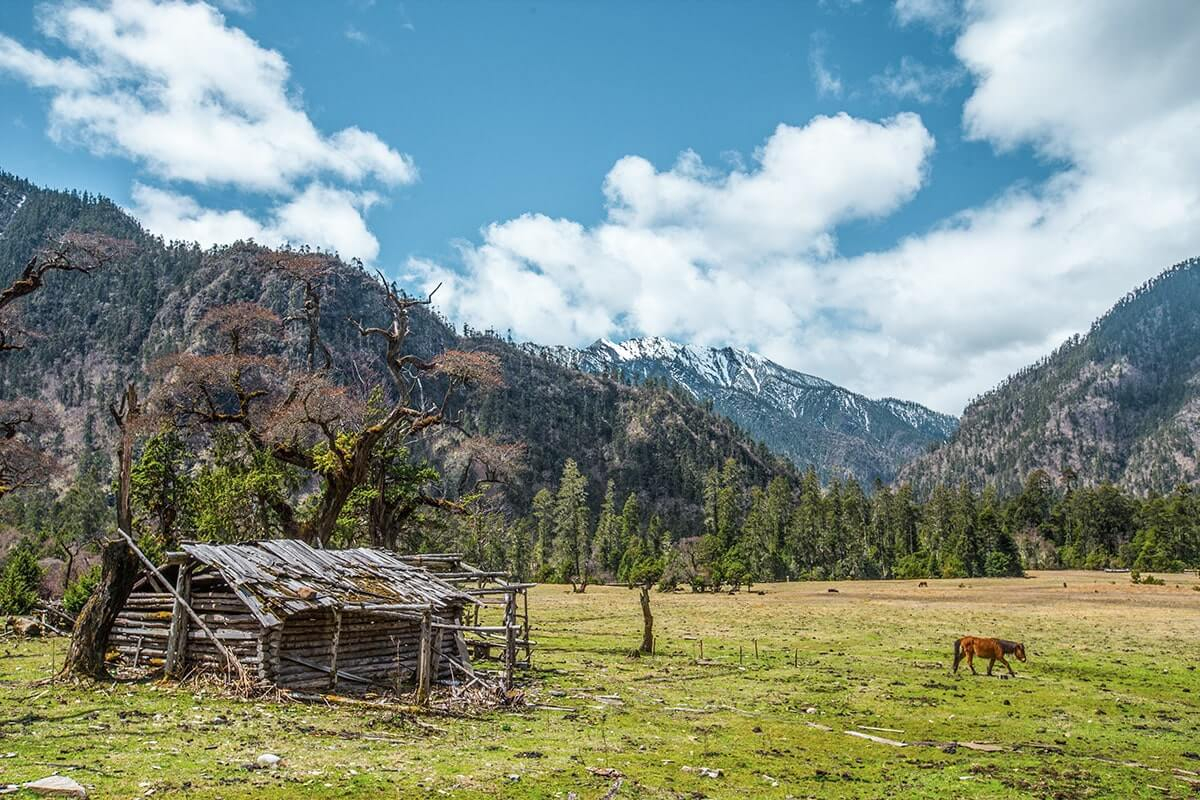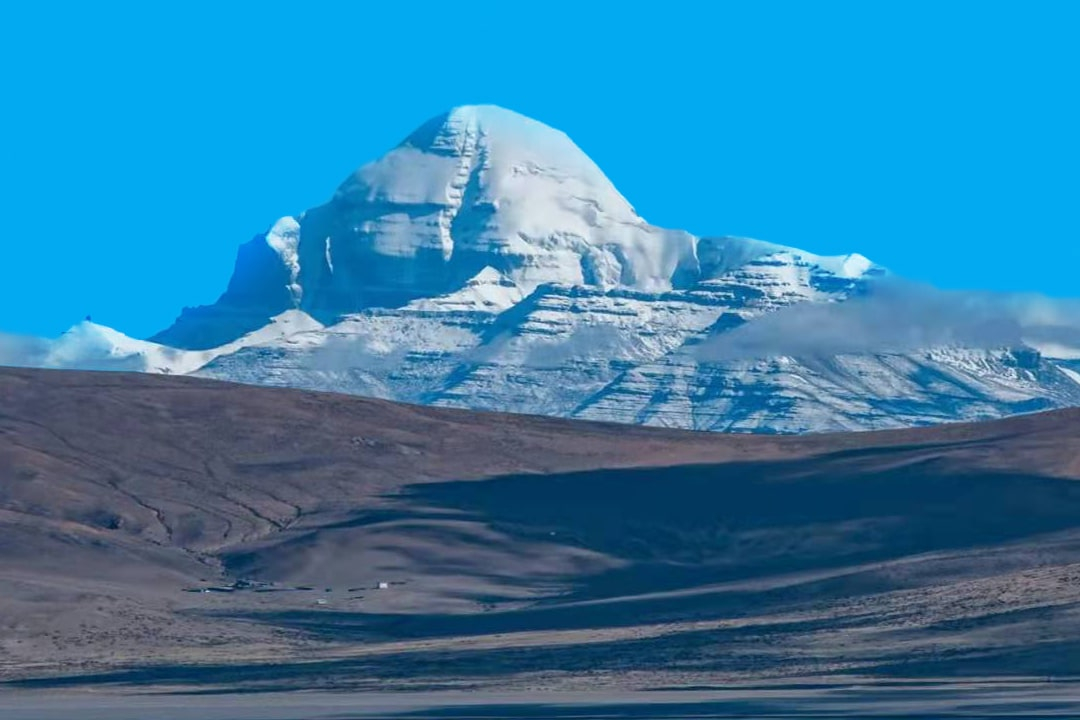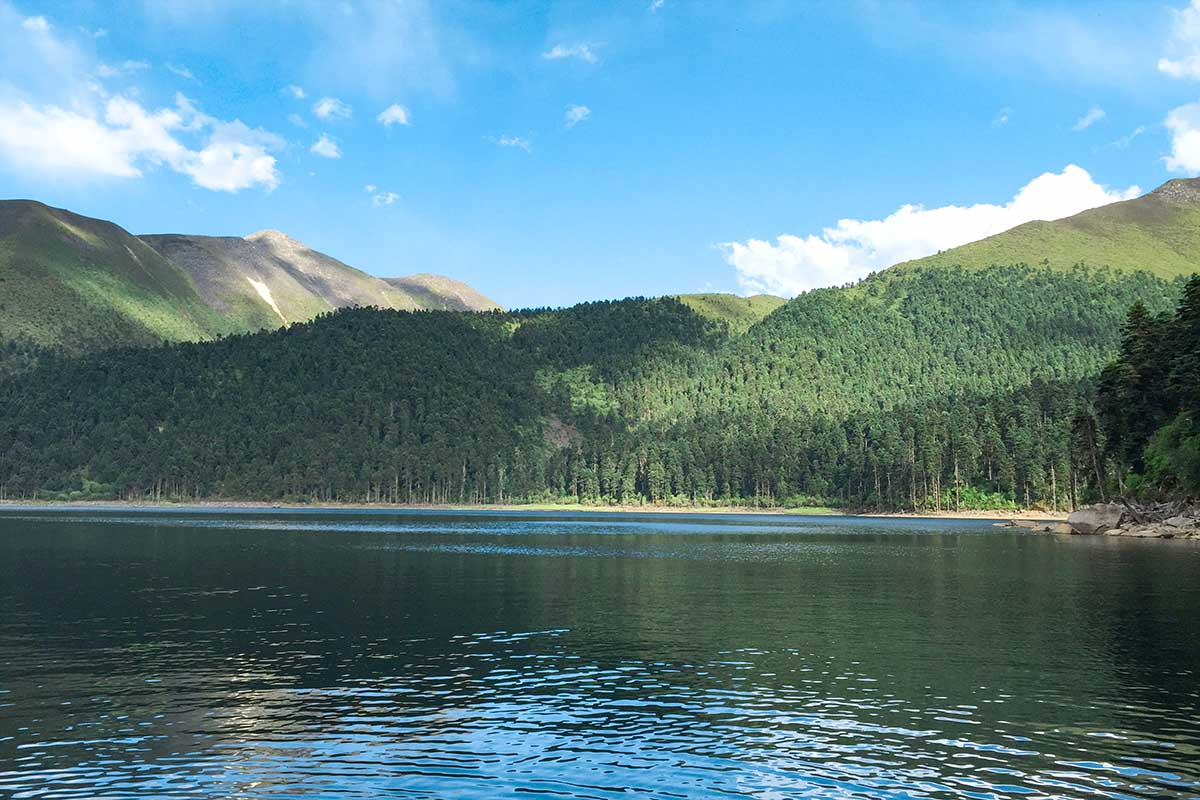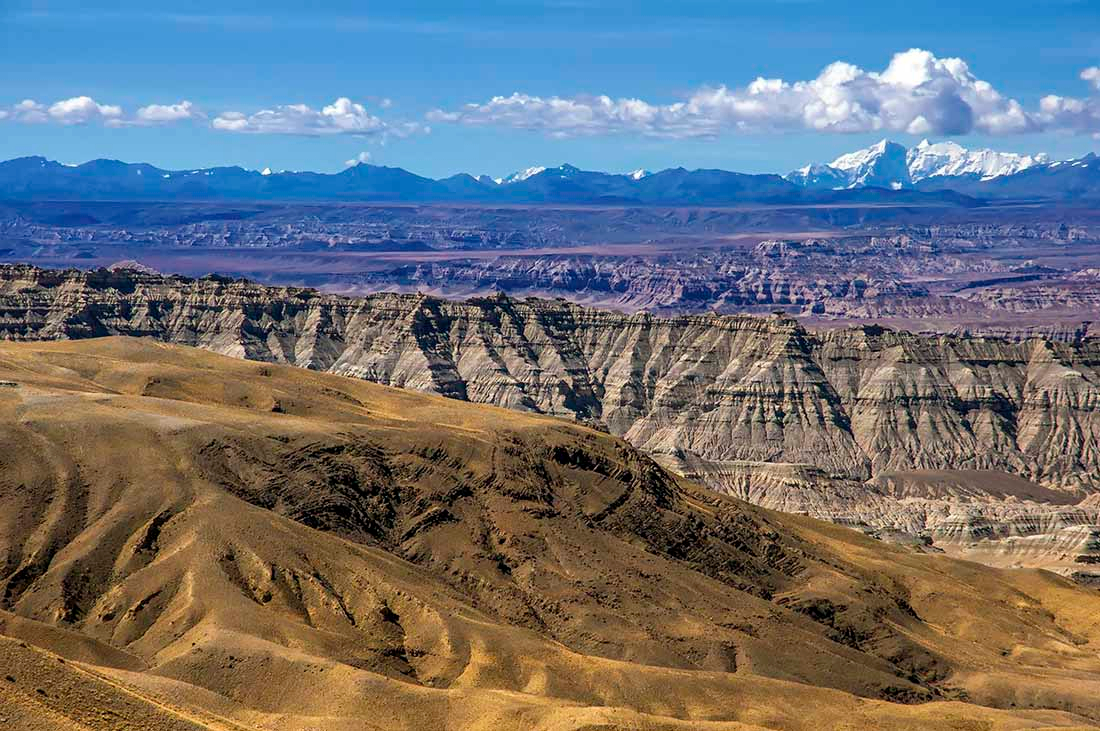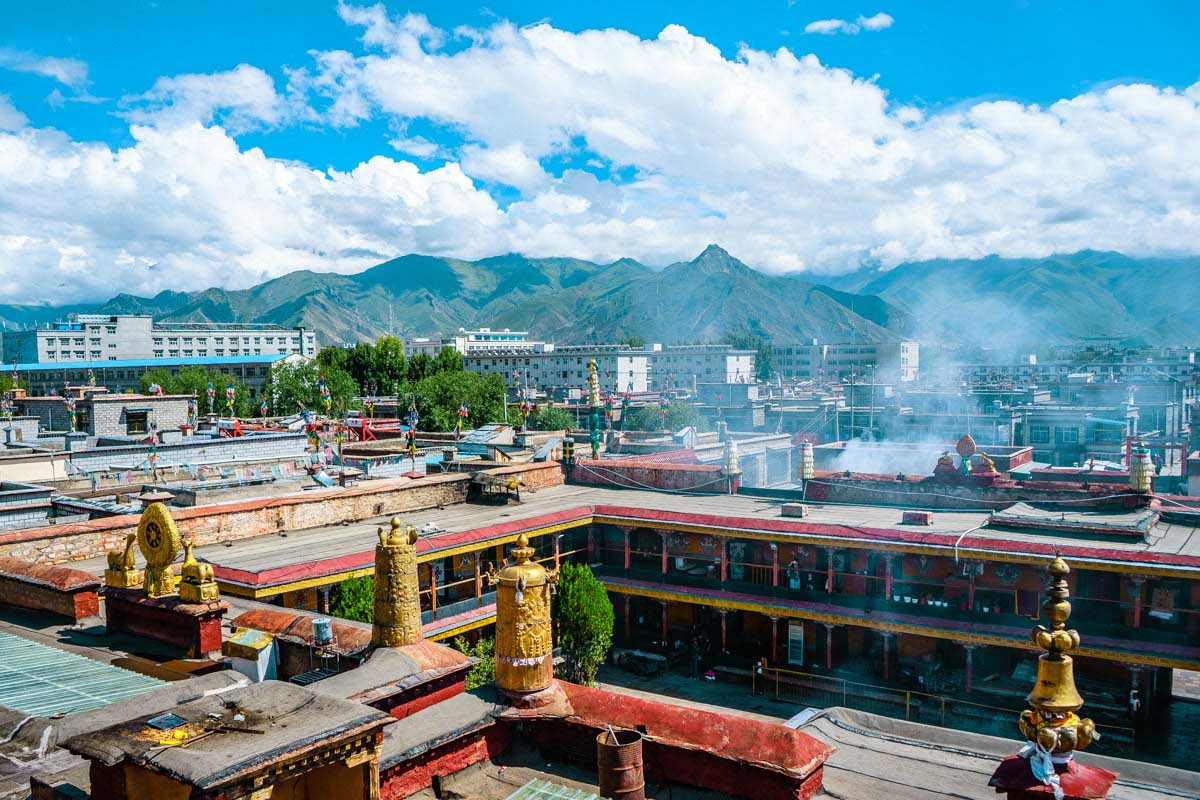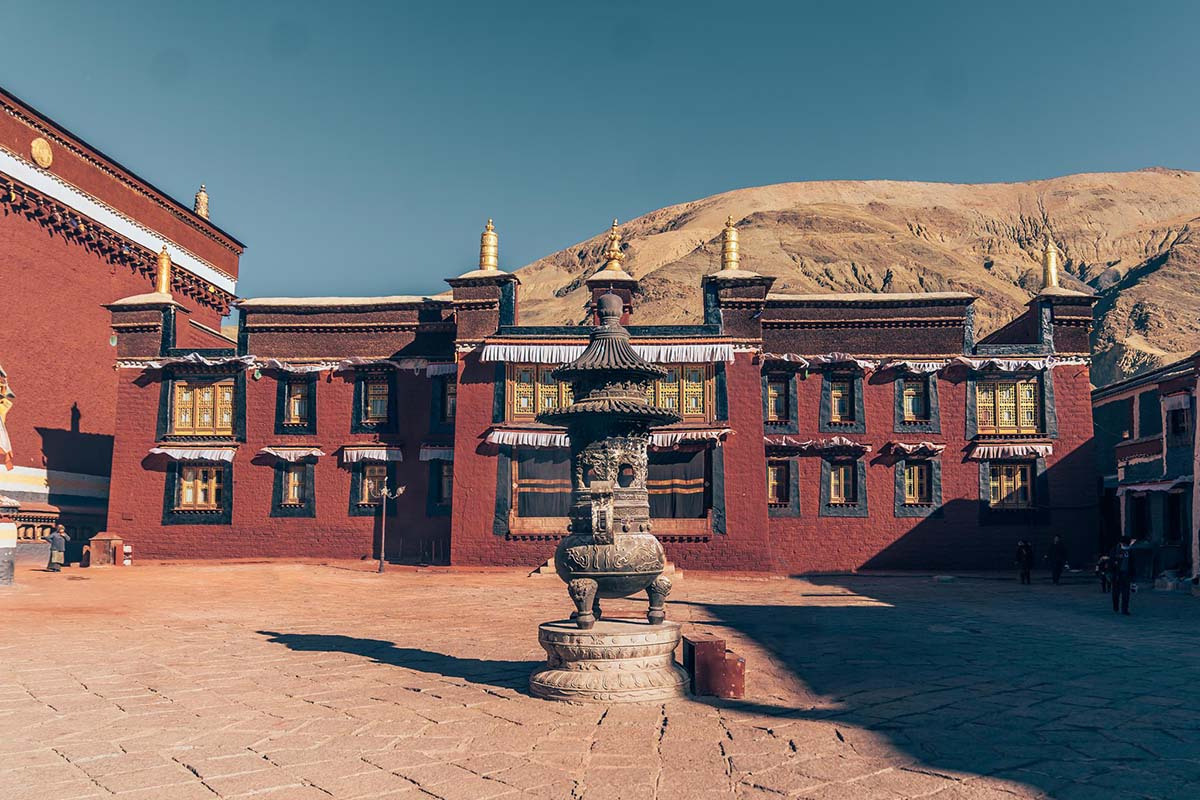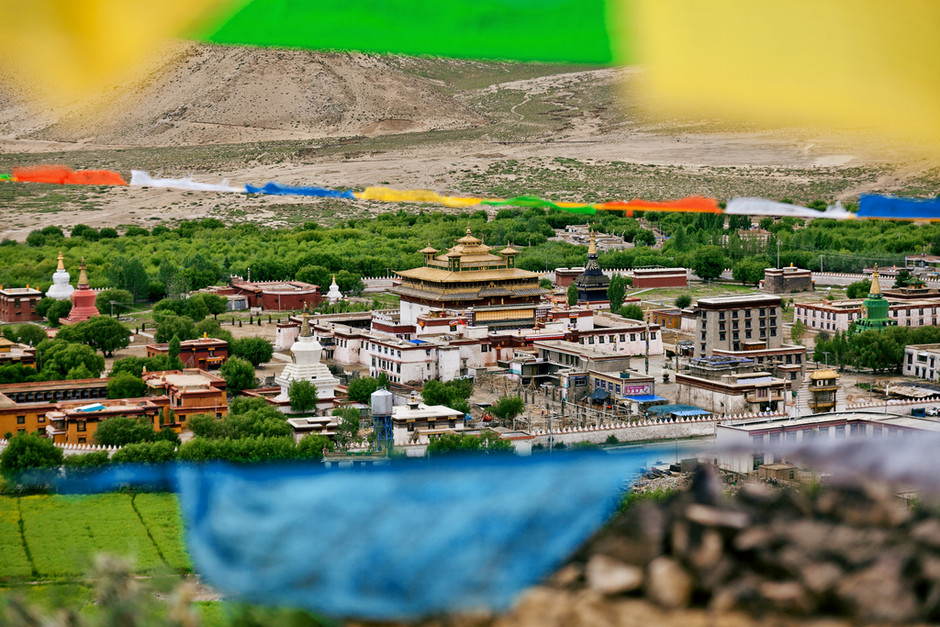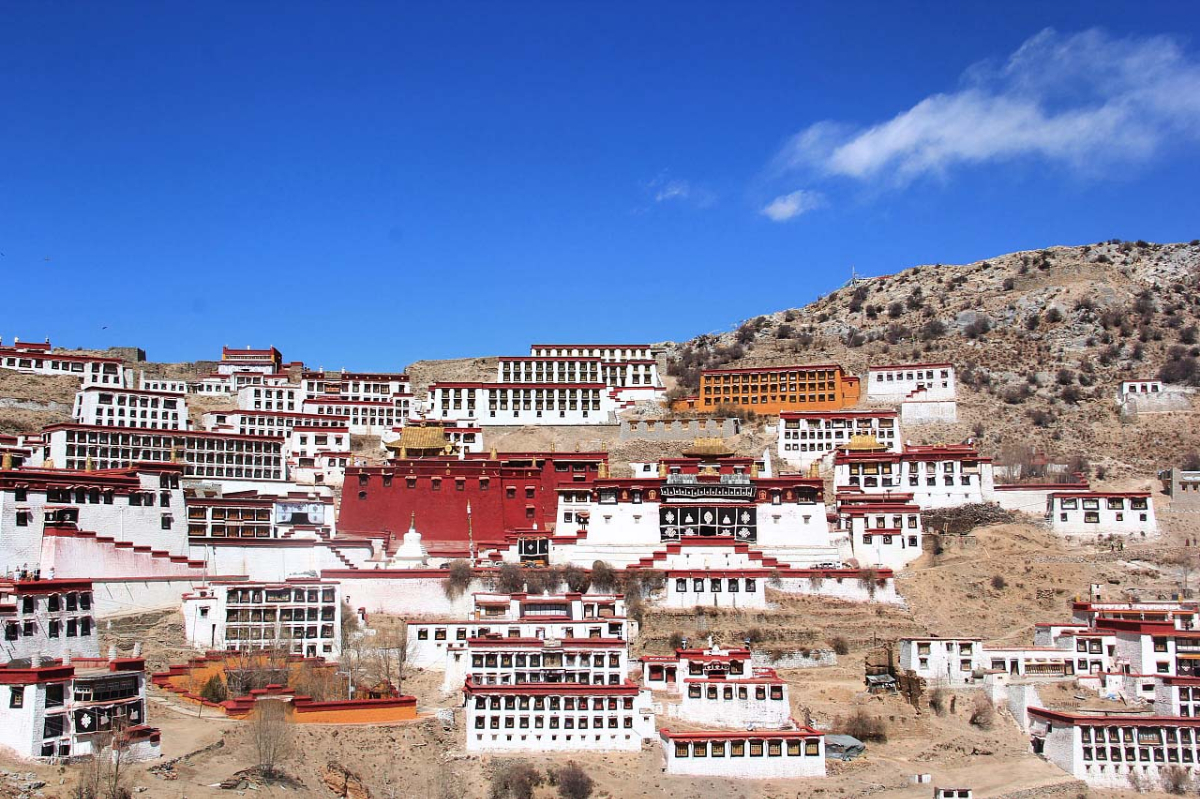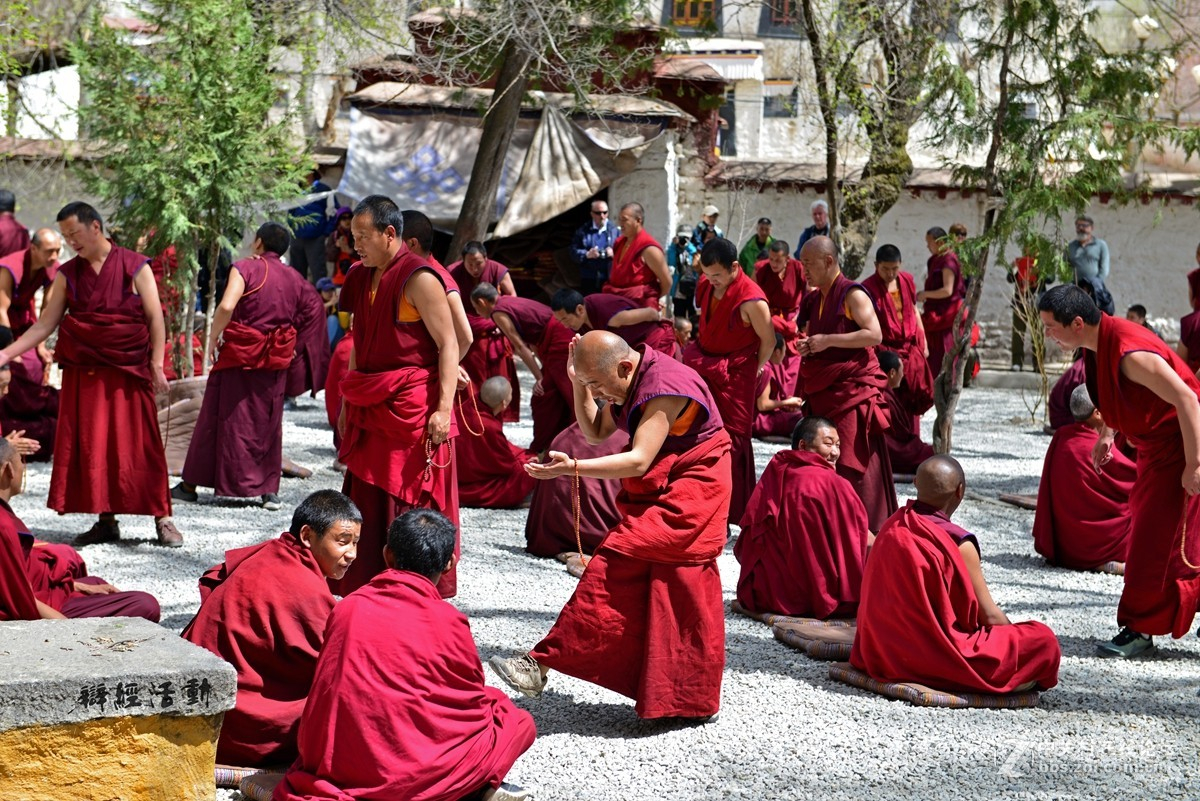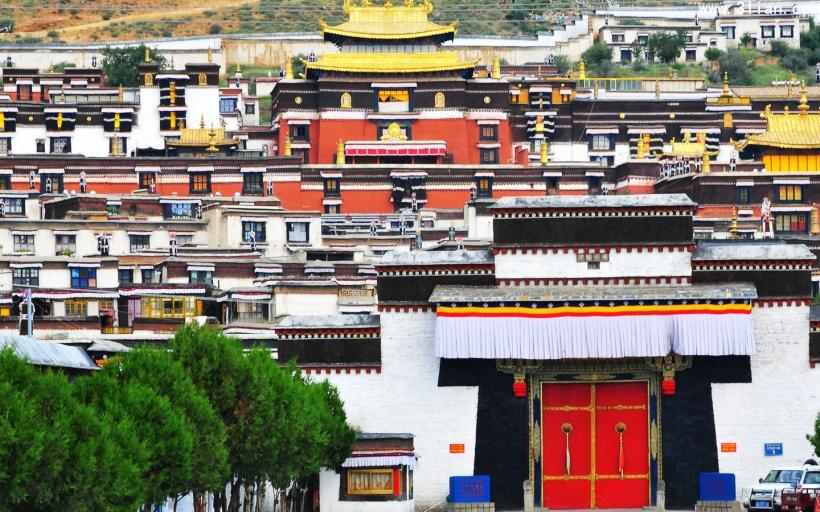Live show of Wencheng Princess
Chinese name: 文成公主实景剧(Wen Cheng Gong Zhu Shi Jing Ju)
Location: Tibet Culture & Tourism Park, by the side of Lhasa River
Estimated time of tour: 1.5 hours
Ticket: varies based on seats (from RMB380-RMB1280)
Time: 9pm from Monday to Sunday night. Closed during winter.
Nearby attractions: Potala Palace, Barkhor Street, Jokhang Temple, Sere Monastery, etc.
Notice: Please consult ticketing office for details. The show time is subject to change in case of bad weather.
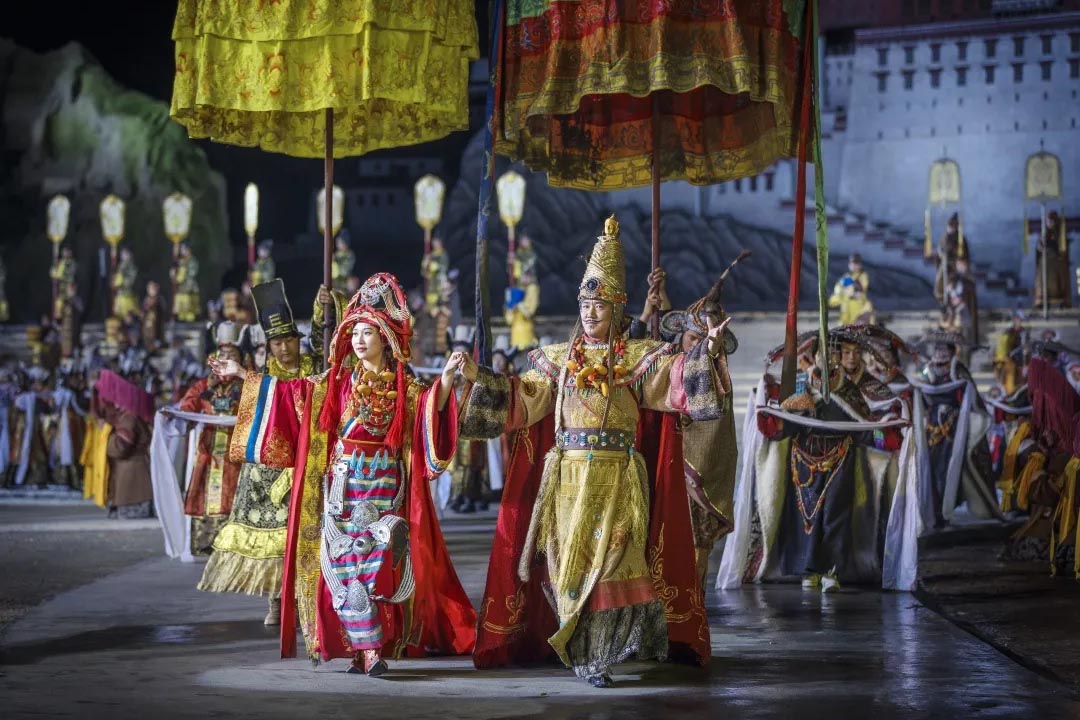
This massive show made its debut in August 2013. It’s been performed every night from April to October by a team of more than 800 dancers, singers. The team is a mixture of Han & Tibetan ethnicity. It lasts about 1.5 hours providing a window for visitors who want to delve deeper into Tibetan culture and history. The performance site is able to accommodate 4000 viewers.
The show is based on the legendary story of Princess Wencheng, a girl of Han ethnic background lived in Tang Dynasty (7 century), married the King of Tibet Songtsen Gampo. The marriage was a political one, with sole purpose of striking a peace deal between Tibetan Kingdom and Tang Dynasty (dominated by Han ethnics). Allegedly, Princess Wencheng brought with her promises of trade agreements, maps on the silk road and a substantial amount of dowry which contained not only gold, but fine furniture, silks, porcelains, books, jewelry, musical instruments, and medical books. Also, Princess Wencheng allegedly arrived with new agricultural methods. This possibly included the introduction of seeds of grains, and rapeseed, other farming tools and advice on how to increase Tibetan agricultural productivity in the region. Princess Wencheng is revered in China for being one of the brides who brought Chinese culture to the peoples beyond their borders - expanding their civilization with culture and knowledge
The show is divided into five sectors. The first sector is The Rhyme of Tang (depicting the might of Tang Dynasty). The second is The Heavenly Sanskrit (depicting the influence of Buddhism over Tibet). The third is The Beauty of Tibetan Dance (demonstrating the folk dance of Tibetan people). The fourth sector is The God of Highland (depicting the unique lifestyle of Tibetan shaped by it geology). The final chapter is The Peace between Han & Tibetan (featuring the long relationship between Tibetan Chinese & Han Chinese). The whole show presents the personal story of Wencheng, as well as the history of Tibet. More importantly, it signifies that people of different ethnicity and culture can live peacefully and respect each other.
- HOTEST
- RECOMMEND
